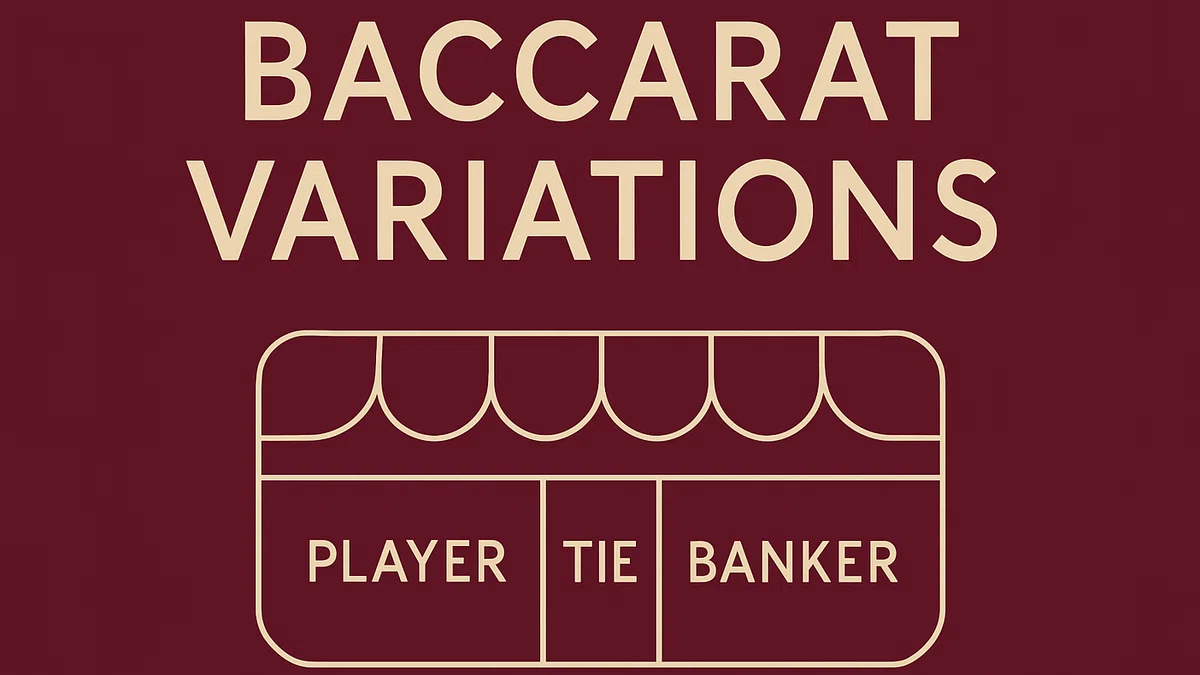Fast-paced, glamorous and revolving around the number 9 – these are the main features of baccarat, a traditional social casino game with consistent rules.
Different ways of playing baccarat exist, though, changing the game dynamic just enough to make one variant more suitable to you than another.
In this guide, you’ll learn:
- What baccarat variations are
- Which baccarat versions exist and how to play them
What are Baccarat Variations?
Variants of baccarat don’t turn this game’s rules upside down.
As you might have seen on other social casino game guides, they usually change aspects of the game such as speed or complexity, which gives different player profiles more options for a fulfilling experience.
Expect to see riffs on the rhythm of the game or the addition of an extra rule or two. The heart of baccarat is still that number 9, also known as a “natural” when it’s made with two cards. A hand that equals 8 can also win.
Related Posts:
What Baccarat Variations exist?
Punto Banco
This variant is a simplified version of baccarat from North America, in much the same vein as Casino Hold’em is a stripped-down version of poker. If you’re searching online, you may not even find the words “Punto Banco” mentioned at all. It’s the standard baccarat ruleset.
You can win with an 8 or a 9 in Punto Banco. The house acts as the banker, and four cards are dealt, beginning with the player. You’ll make a play on “punto” (player), “banco” (bank), or the tie, and then a fixed set of rules determines whether a third card is dealt. That’s all you have to know. It is commonly played with six or eight decks and stands out for being entirely based on luck. Older versions of baccarat allow for some basic decision-making, as we’ll see soon.
Chemin de Fer
While Chemin de Fer is an older type of baccarat, it’s regarded as a variant in modern casinos. The main difference between Chemin de Fer and Punto Banco is that the role of banker moves between the players, and they must cover their opponents’ plays. Typically up to 12 players, or sometimes as many as 14 people, can play at one Chemin de Fer table. Players compete against the banker, and cards are dealt facedown – unlike in Punto Banco. If neither side has a natural 8 or 9, a third card may be drawn according to formal rules.
In Chemin de Fer, the banker has more discretion than in Punto Banco, and players traditionally follow certain conventions when deciding whether to draw. For example, it is customary for a player to draw on 0 to 4, stand on 6 or 7, and treat 5 as a flexible choice. These conventions give the game a more strategic feel compared to the rigid rules of Punto Banco.

Baccarat Banque
In Baccarat Banque, the banker role is fixed (often held by the player making the largest stake). The banker is dealt two hands, while the rest of the table collectively shares one player hand. Other participants may bet on either the banker’s two hands or the shared player hand.
Cards are dealt face down, and play proceeds according to standard baccarat drawing rules.
No Commission Baccarat
While baccarat places a 5% commission on winning plays on the banker’s hand, no commission baccarat does away with that. Exceptions exist, though. At some tables, a banker hand worth 6 will only return half the play if it wins. No commission baccarat is interesting because it includes side plays. These are plays made separately from the standard banker/player. For instance, a Lucky 6 side play wins on winning banker hands worth 6.
Speed Baccarat
Often paired with the “live” casino concept, speed baccarat is exactly what it sounds like – it’s baccarat at high speed. This variant of the game has rounds lasting no more than 30 seconds.
Speed baccarat usually comes with side plays such as Perfect Pair (two identical cards in a hand) and Either Pair (any pair in a hand). The Perfect Pair side play is one of the highest rewarding plays in baccarat, with prizes of up to 25:1.
Mini Baccarat
Like Punto Banco, Mini Baccarat is casino-friendly. That means it’s faster, simpler, and less formal than the “big” version of baccarat. The objective remains the same, namely, to predict whether the player or banker will have the hand closest to 9. Mini baccarat differs from regular baccarat by having the dealer handle all the cards. This limits player autonomy and keeps the game moving quickly. Up to seven people can join a table.
Related Posts:
How to Choose the Right Variation
Like many things in casino gaming, the ‘right’ variation is subjective. Several of the games listed above are tailored toward short rounds (Speed, Mini, Punto Banco) to make them easier to play in the casino. Chemin de Fer seems more like a special occasion in contrast.
The side plays, which are more common than you might think, change winning conditions without touching the rules.
If you’re a newcomer, it’s arguably best to start with games simply called Baccarat. This will (probably) let you play with the Punto Banco ruleset. Variants are usually qualified with whatever adjustments have been made, such as Mini Baccarat. Play with low stakes until you’re familiar with the rules, and then graduate to a more experimental version of the game.
Ready to Try Baccarat Variations?
There you have it – different baccarat variations that enable you to enjoy different play styles and find just the right fit.
Whether you prefer a slower or faster pace, simpler or more complex rules, you’ll still be able to partake in this glamorous casino special.
Explore our range of baccarat games at McLuck social casino and enjoy this wonderful game.

